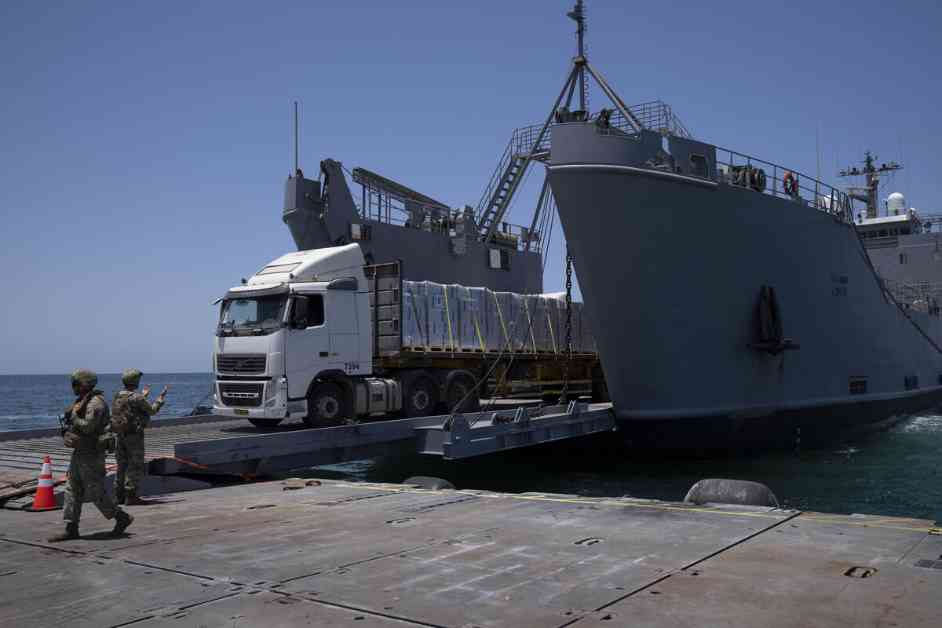The recent removal of the U.S. military-built pier intended to bring aid to Gaza has raised concerns about its uncertain return, according to U.S. officials. The decision to take down the pier was made due to weather conditions in order to protect it from damage. However, officials have stated that they are considering not reinstalling it unless the aid distribution process improves.
Although the military has managed to deliver some food through the pier, a significant amount of aid remains stored in the adjacent yard, which is nearing full capacity. Aid agencies have been facing challenges in transporting the food to various parts of Gaza due to attacks on humanitarian convoys.
The United Nations, which plays a crucial role in aid distribution to Palestinians, halted the distribution of food and emergency supplies received through the pier since June 9. This suspension followed a security review prompted by concerns over the safety and neutrality of aid workers after the Israeli military used the area near the pier for a rescue operation that resulted in civilian casualties.
Steve Taravella, a spokesperson for the U.N. World Food Program, mentioned that the organization’s involvement in the pier project remains on hold pending the resolution of security issues. While the pier was initially intended as a temporary solution to aid delivery challenges in Gaza, President Joe Biden’s $230 million initiative has faced criticism for its inefficiencies and high costs.
Despite successfully delivering over 19.4 million pounds of food to Gaza, the pier has encountered setbacks such as aid interruptions and weather-related damage. The structure was temporarily removed for repairs shortly after its initial operations began, and heavy seas have once again forced its removal to the Israeli port of Ashdod.
While there is a possibility of reinstalling the pier once the weather conditions improve, U.S. officials have not made a final decision on the matter. Pentagon spokeswoman Sabrina Singh emphasized the importance of ensuring that adequate aid reaches Gaza and mentioned ongoing discussions with aid agencies regarding food distribution.
However, Singh also highlighted the need for additional aid to be transported to Cyprus and then to the pier for further distribution. She acknowledged that the onshore storage area is nearly full, raising concerns about the practicality of reinstalling the pier without sufficient space for aid operations.
Overall, the fate of the U.S. Gaza aid pier remains uncertain, pending further deliberations on aid distribution strategies and the resolution of security challenges. As efforts continue to address these issues, the goal of providing essential humanitarian assistance to the people of Gaza remains a top priority for U.S. officials and aid agencies involved in the relief efforts.



